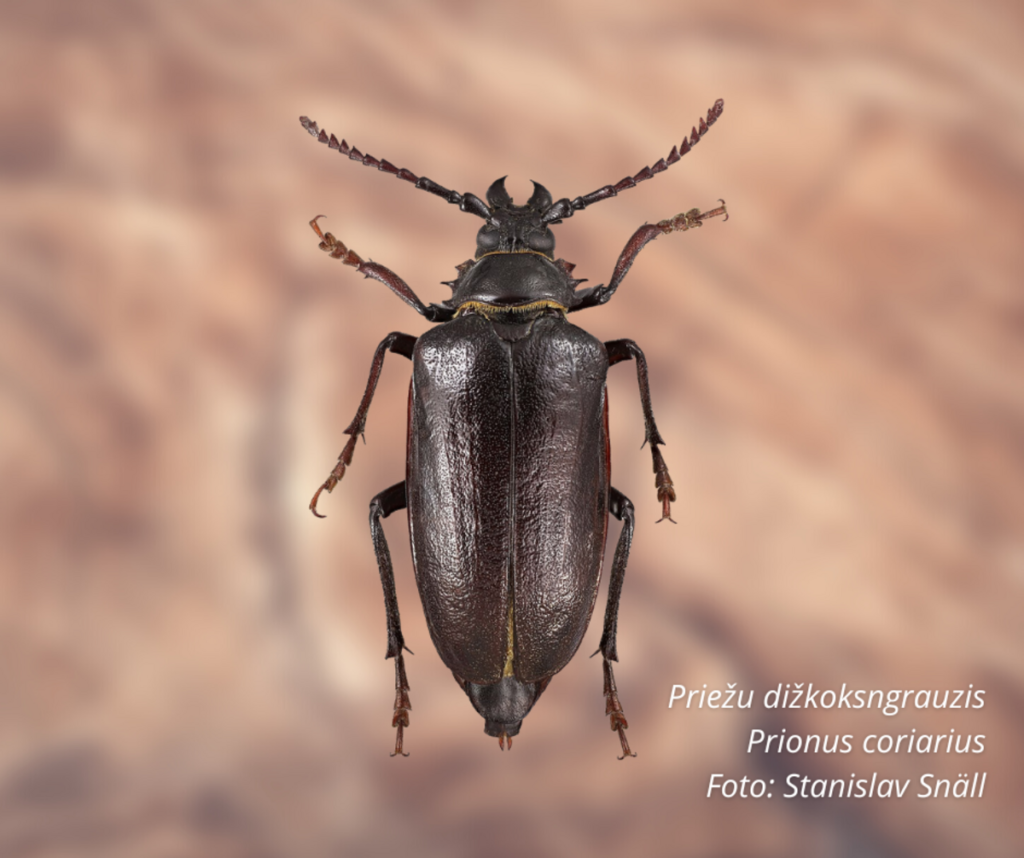Protected species of June and July - Longhorned beetles
In June and July, we are featuring two species of rare and protected longhorn beetles - Tragosoma depsarium and the Sawyer (Prionus coriarius L.).
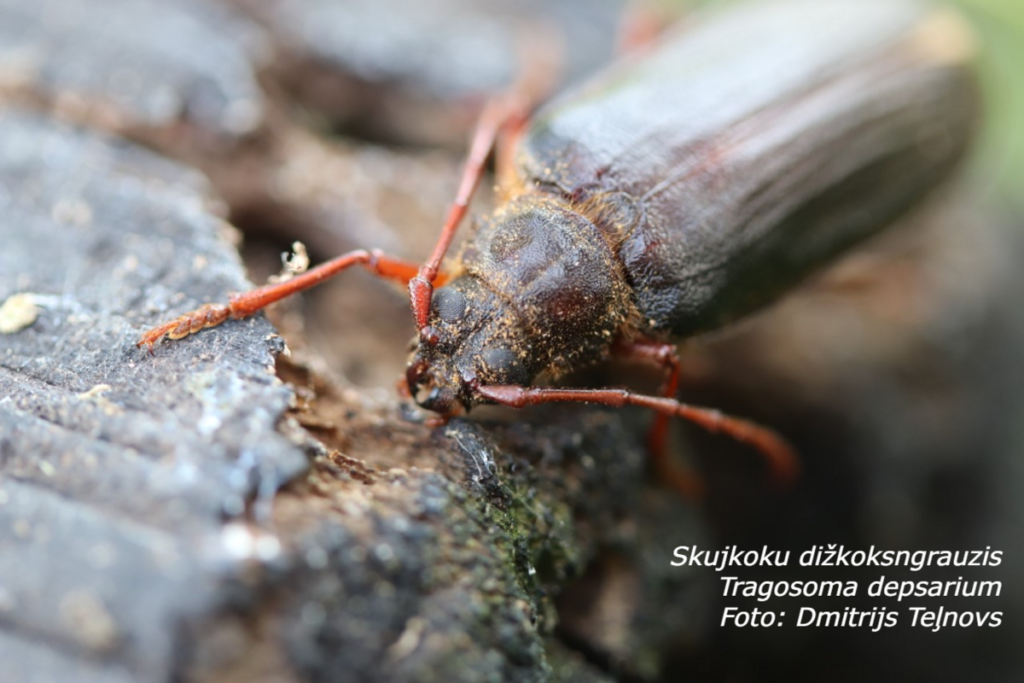
Latvian Society of Entomology chose to nominate Tragosoma depsarium as the species of the year and rightfully so. Tragosoma depsarium is one of the indicator species of forests important for natural diversity, as it is found in old, sunny pine forests, where suitable dead wood can be found. The Tragosoma depsarium beetle is a large, massive beetle whose body length can exceed three centimetres. At the front of the body, the beetle has one well-defined and outwardly protruding spine on each side. The beetle is dark brown, with yellowish to reddish-brown hairs on the head and prothorax, while the upper surface of the elytra is less prominent. It can be found in old, sunny pine forests where old, medium- to large-sized pine stands are found. If there are no such suitable forests, the beetle can sometimes also be found in clearings and new growths, where some suitable burrows have been preserved. On warm summer nights, you may get lucky and see the rare beetles flying and crawling along the slopes.
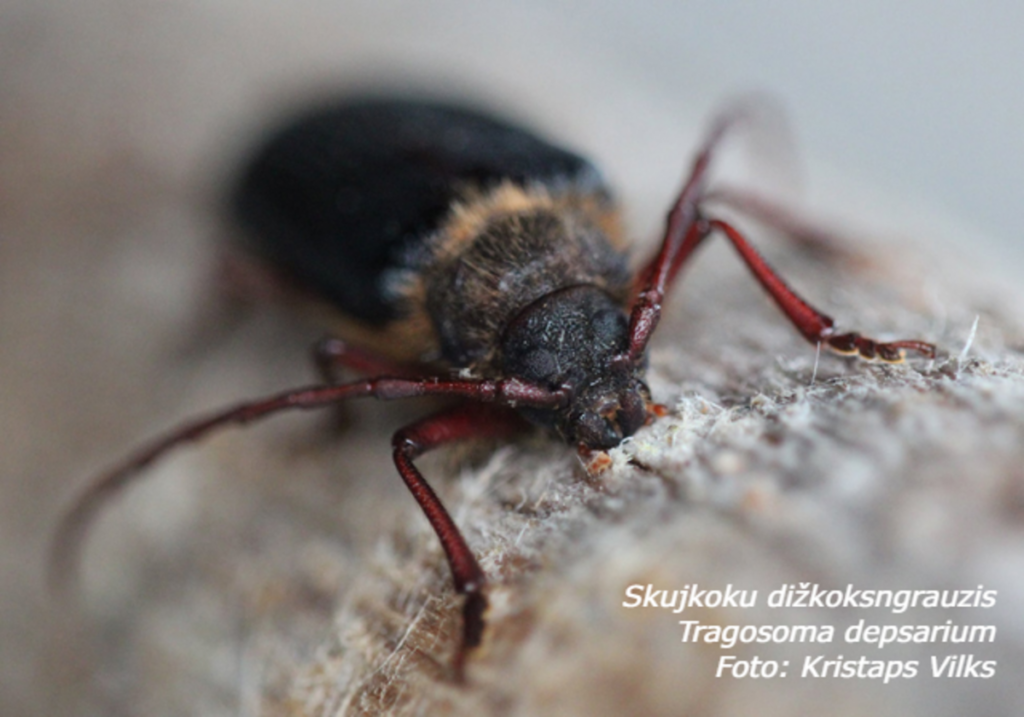
This species does not live on living, growing trees, nor is it interested in fresh, wind-blown or broken trees. It needs dead trees that have been lying on the ground in the forest for at least several years, losing their bark over time and acquiring their characteristic greyish hue, as well as burnt and dead trees. The beetles first look for large, well-lit and warmed by the sun. Larvae live inside the crypt for 3-4 years until they incarnate there.
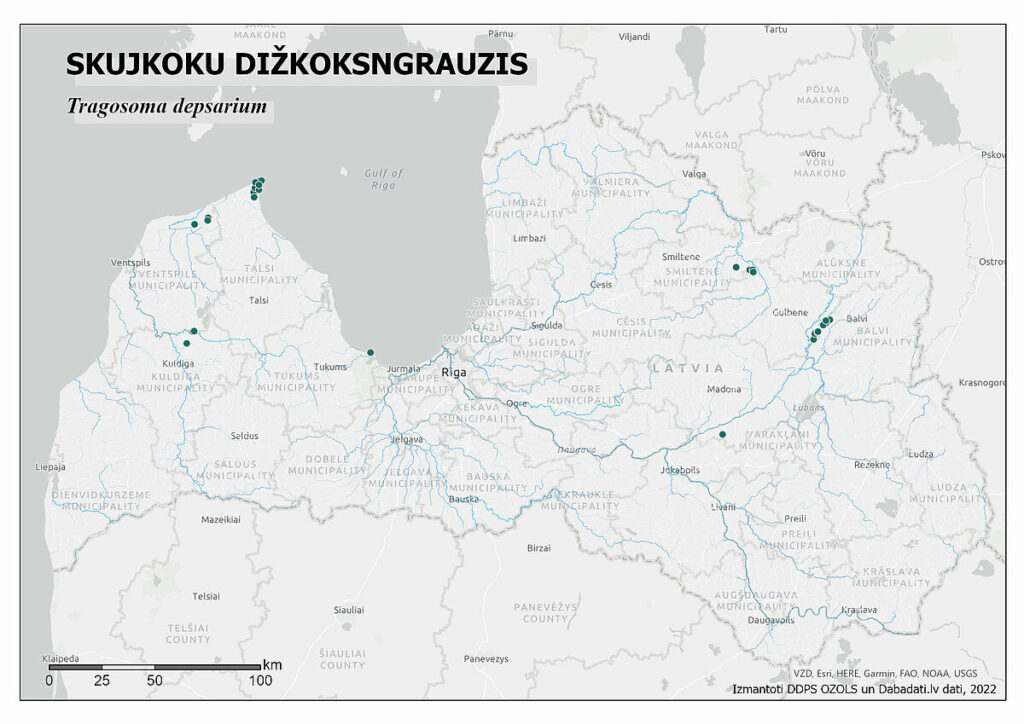
Other longhorn beetle species living in Latvia may be similar to the Tragosoma depsarium, including more common beetles. As the species of the month for July, we have decided to feature one of them – the Sawyer (Prionus Coriarius L.). This beetle is also massive and can reach a length of more than three centimetres, and members of this species also have saw-shaped tentacles on their heads.
Larvae of the Sawyer live in rotten hardwood and softwood. The female lays her eggs on the trunks of dead trees, while the hatched larvae bore into the wood and enter the roots, which are the larvae's main food source. If the food resources in one root are depleted, the larvae are able to move through the soil to reach the roots of nearby trees. After 3-5 years, the larvae form a cocoon, which is the size of a chicken egg! Adult beetles can be found in forests from July to September. Although this species is also very rare in Latvia, it is possible that you will be able to meet it in the afternoon or around dusk near the falls.
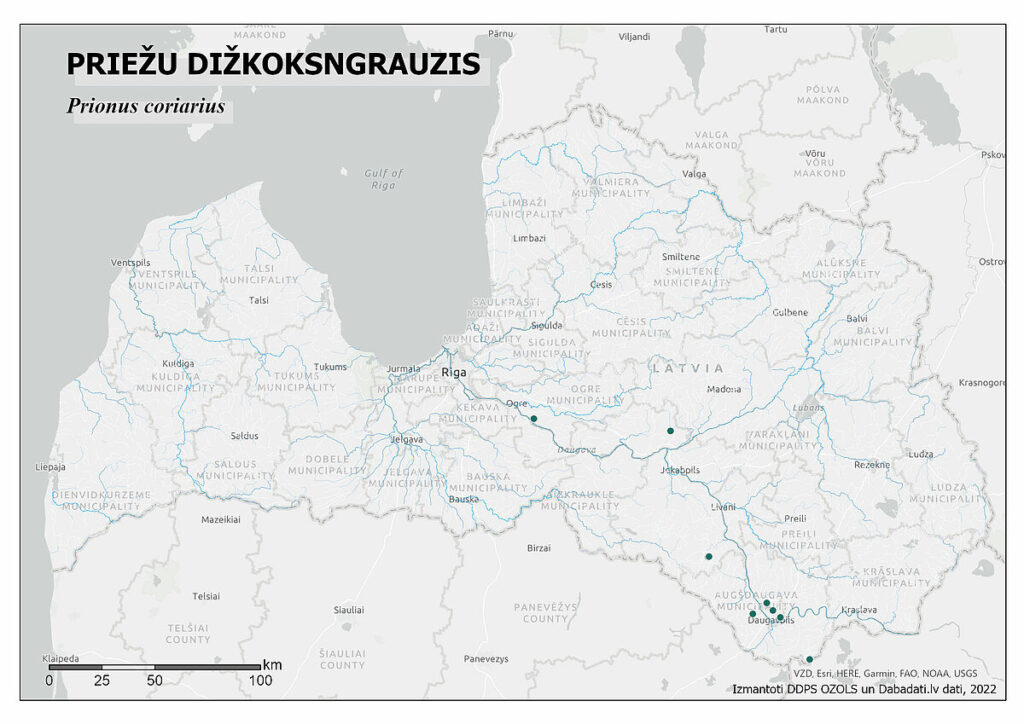
Thanks to Kristaps Vilks and Dmitrijs Telnovs for information and help in developing the material.
Author of species distribution maps: Jānis Ukass

